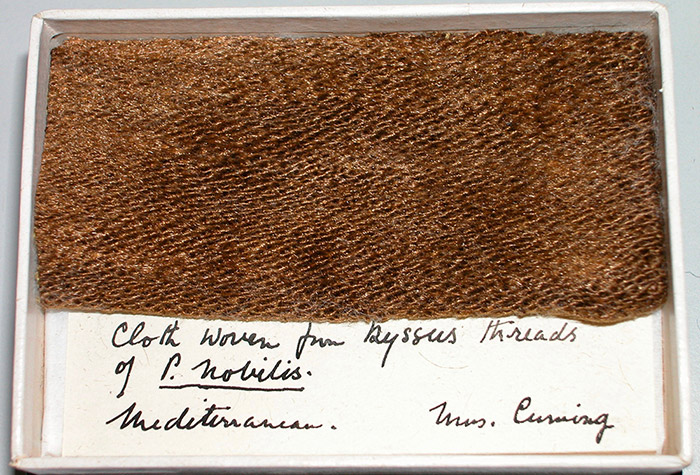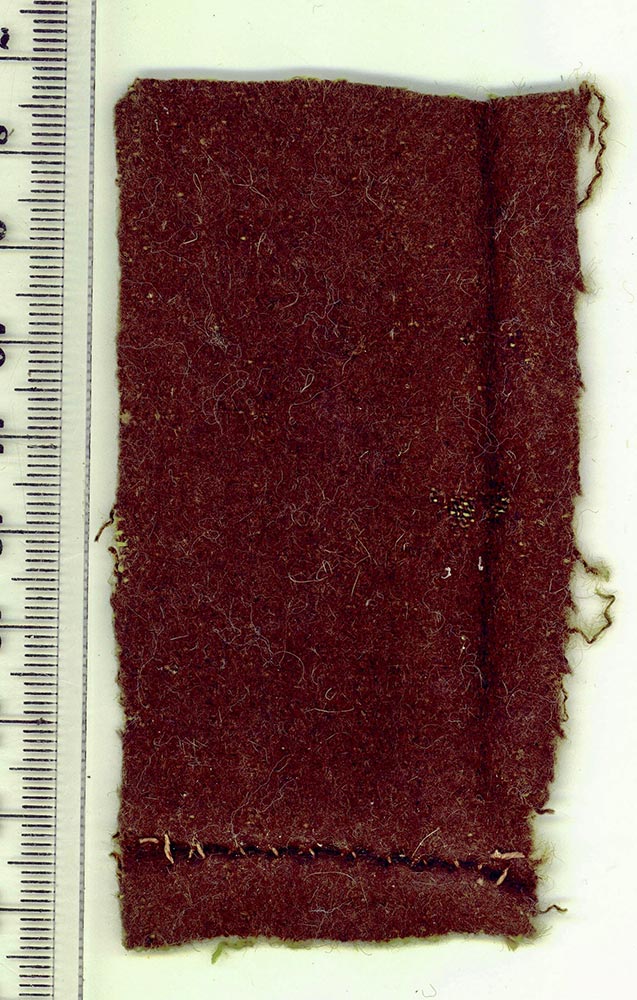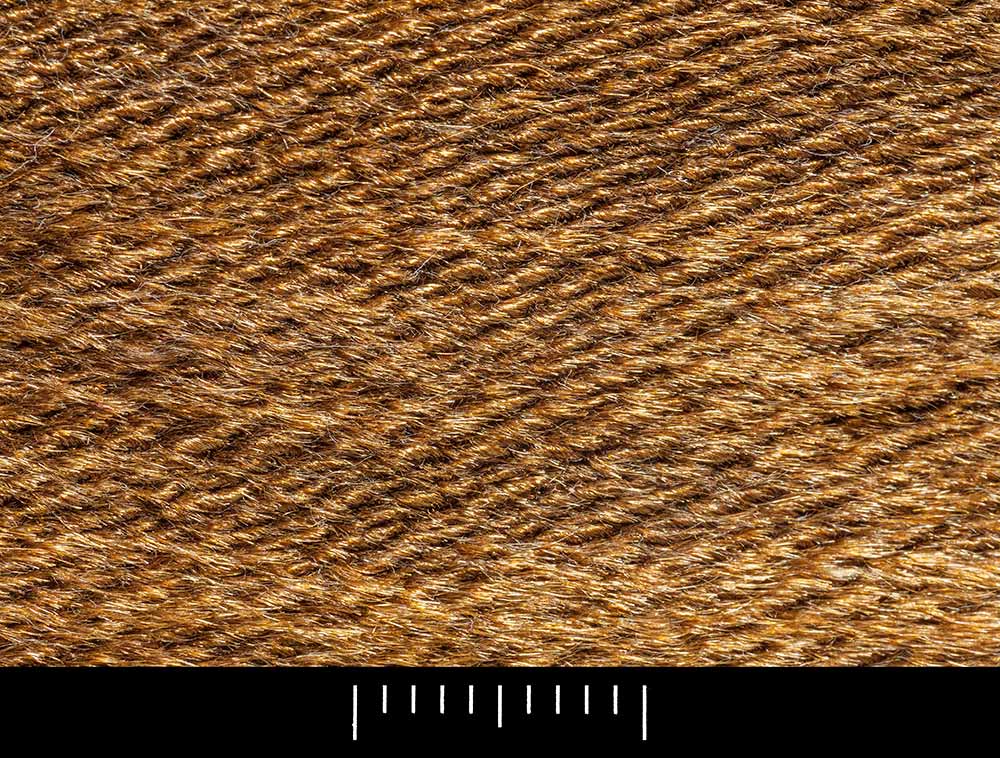Woven fragment
Woven fragment, time unknown, I-Taranto. UK-London, Natural History Museum, Department of Zoology, Invertebrates I (Mollusca) Colln. Acc. No 1829, Reg. No: 20040207 (MS Inventory 17).
Sea silk, ”small fragment of twill-woven fabric with felt backing”, folded on two sides about 1 cm, 6×4 cm.
Label: ”Cloth woven from byssus threads of Pinna nobilis, Mediterranean. Mrs. Cuming”.
This fragment, a kind of double face, is one of the very few woven objects made of sea silk. It was analyzed in 2018/19 by Penelope Walton Rogers of Anglo-Saxon Laboratory, GB-York (material and processing), Margarita Gleba, McDonald Institute for Archaeological Research, University of Cambridge, GB-Cambridge (REM), and Felicitas Maeder, Naturhistorisches Museum Basel (history). Three different animal fibres were found: Sea silk, mulberry silk and another animal fibre: wool or cashmere. The fragment shows heavy signs of wear. The results were published in 2019 (Maeder et al. 2019).
This fragment shows great similarity with the fragment from the Monschau sample book (MS Inventory 43).
The Florentine photographer Vittorio Alinari visited Sardinia in 1914 and 1915. In his travelogue he describes a fabric made of sea silk, which was also used for waistcoats: ”…una stoffa di un bel colore metallico, che si avvicina al rame, con la quale si confezionano delle sottovesti che, guernite di bottoni in filigrana d’oro, pure lavorati nel paese e nel Cagliaritano, producono bellissimo effetto…”, (in English : …a fabric of a beautiful metallic colour, close to copper, with which the undervests are made, covered with gold filigree buttons, also worked in the village and in the area of Cagliari, producing a beautiful effect…). It is quite possible that this fragment once belonged to such a waistcoat, although the label refers to Taranto.



